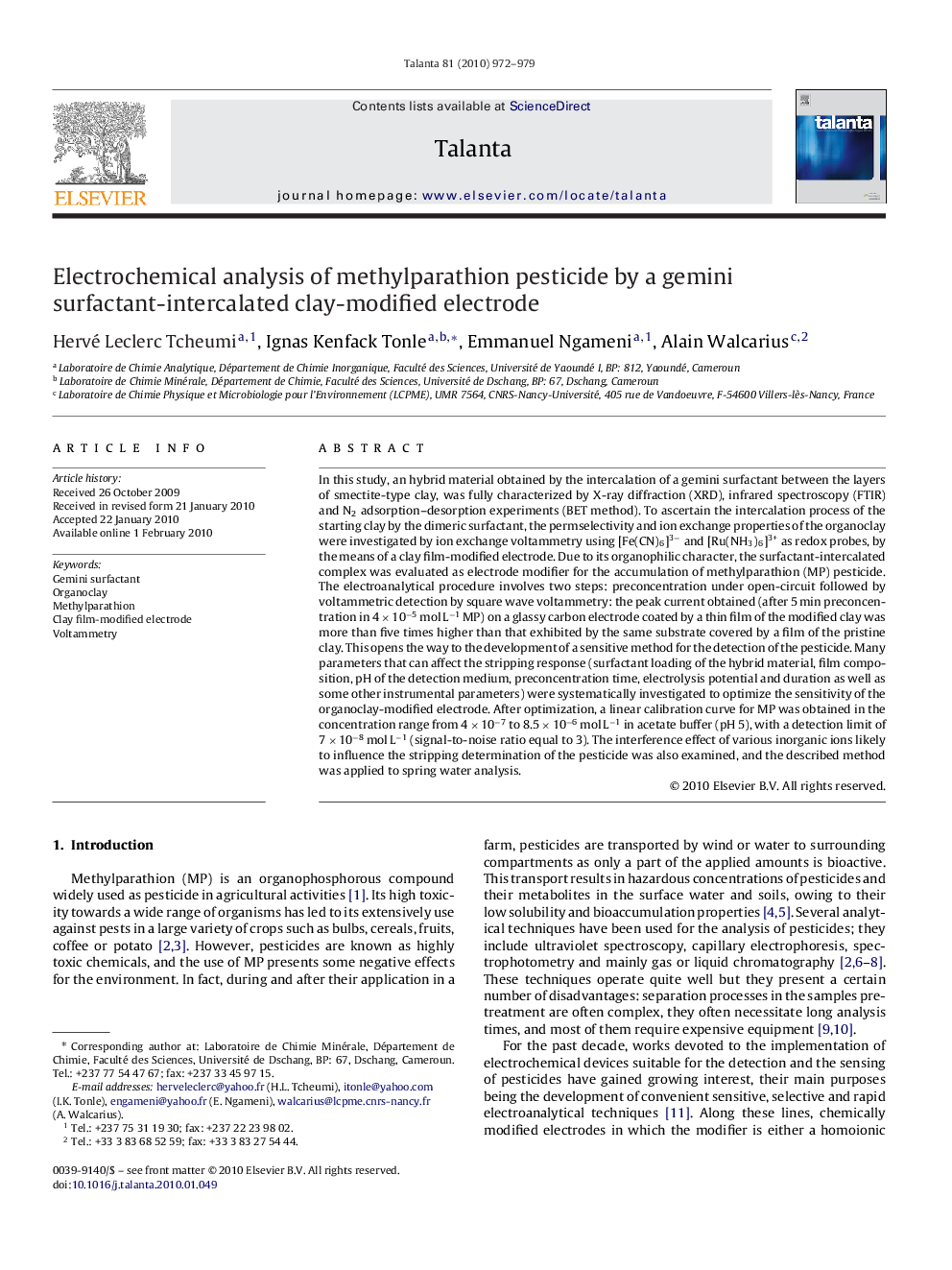| کد مقاله | کد نشریه | سال انتشار | مقاله انگلیسی | نسخه تمام متن |
|---|---|---|---|---|
| 1246524 | 969758 | 2010 | 8 صفحه PDF | دانلود رایگان |

In this study, an hybrid material obtained by the intercalation of a gemini surfactant between the layers of smectite-type clay, was fully characterized by X-ray diffraction (XRD), infrared spectroscopy (FTIR) and N2 adsorption–desorption experiments (BET method). To ascertain the intercalation process of the starting clay by the dimeric surfactant, the permselectivity and ion exchange properties of the organoclay were investigated by ion exchange voltammetry using [Fe(CN)6]3− and [Ru(NH3)6]3+ as redox probes, by the means of a clay film-modified electrode. Due to its organophilic character, the surfactant-intercalated complex was evaluated as electrode modifier for the accumulation of methylparathion (MP) pesticide. The electroanalytical procedure involves two steps: preconcentration under open-circuit followed by voltammetric detection by square wave voltammetry: the peak current obtained (after 5 min preconcentration in 4 × 10−5 mol L−1 MP) on a glassy carbon electrode coated by a thin film of the modified clay was more than five times higher than that exhibited by the same substrate covered by a film of the pristine clay. This opens the way to the development of a sensitive method for the detection of the pesticide. Many parameters that can affect the stripping response (surfactant loading of the hybrid material, film composition, pH of the detection medium, preconcentration time, electrolysis potential and duration as well as some other instrumental parameters) were systematically investigated to optimize the sensitivity of the organoclay-modified electrode. After optimization, a linear calibration curve for MP was obtained in the concentration range from 4 × 10−7 to 8.5 × 10−6 mol L−1 in acetate buffer (pH 5), with a detection limit of 7 × 10−8 mol L−1 (signal-to-noise ratio equal to 3). The interference effect of various inorganic ions likely to influence the stripping determination of the pesticide was also examined, and the described method was applied to spring water analysis.
Journal: Talanta - Volume 81, Issue 3, 15 May 2010, Pages 972–979